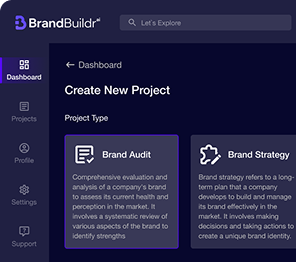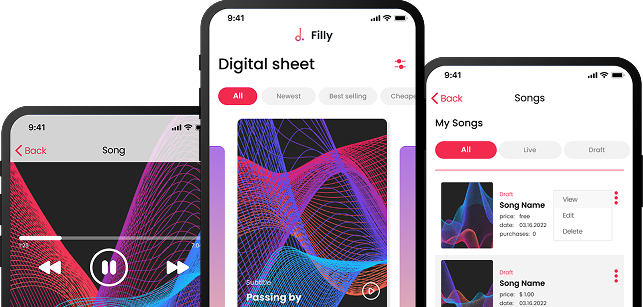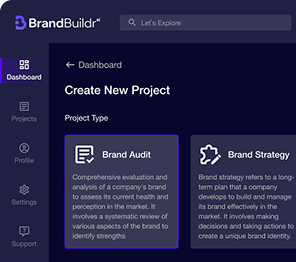The Discovery Phase is a foundational step in product development, ensuring that the final product meets user needs, aligns with business goals, and mitigates potential risks. Often overlooked or rushed, this phase plays a crucial role in setting a project on the right path by helping teams fully understand the scope, technical requirements, and challenges before development begins.
In this article, we will explore why the Discovery Phase is essential, what it involves, and how it contributes to the overall success of your project.

What is the Discovery Phase?
The Discovery Phase is the first step in any product development process, designed to gather insights, clarify project goals, and lay the groundwork for building a successful product. It involves extensive research, stakeholder interviews, competitor analysis, and technical assessments to ensure that both the development team and the client are aligned on the project’s objectives and expectations.
During this phase, teams work to:
1. Identify User Needs: Understanding what the target audience truly needs is key to building a product that solves real problems.
2. Clarify Business Goals: Ensuring that the project aligns with the business’s strategic objectives, such as improving customer satisfaction or increasing revenue.
3. Assess Technical Feasibility: Investigating whether the technical requirements are achievable and sustainable within the project’s constraints.
4. Define Project Scope: Establish clear boundaries for what will be included in the product’s initial release (MVP) and what may come in future iterations.
The outputs of the Discovery Phase typically include user personas, user journeys, functional requirements, technical specifications, and an initial project timeline and budget.
.avif)
Why is the Discovery Phase Important?
Skipping or rushing through the Discovery Phase is a recipe for project failure. While it may seem like a time-consuming process, it ultimately saves time, money, and effort in the long run by preventing costly mistakes and rework. Here are some reasons why the Discovery Phase is critical for project success:
Alignment Between Stakeholders and the Development Team
The Discovery Phase ensures that all stakeholders, from clients to developers, are on the same page. Miscommunication or misalignment between business owners and technical teams is a common cause of project failure. By conducting in-depth discussions during this phase, both parties can clarify expectations, identify potential risks, and avoid misunderstandings that might derail the project later on.
Reduction of Risk
One of the biggest benefits of the Discovery Phase is the mitigation of risks before they become roadblocks. Whether it’s a lack of clarity around user needs, unforeseen technical limitations, or budget constraints, addressing these issues upfront reduces the likelihood of encountering them in later stages, where they may be much more costly to resolve.
Better Understanding of the User
Developing a deep understanding of the end-user is essential for building a product that resonates with the target audience. The Discovery Phase allows you to conduct market research, gather user feedback, and create user personas that guide design and development decisions. This focus on the user ensures that the product you build is not just functional but also user-centric.
Clear Definition of Scope and Requirements
The Discovery Phase allows for the detailed breakdown of the project’s scope, ensuring that everyone knows what the product will include—and more importantly, what it won’t. This helps to prevent scope creep, where additional features or functionalities are added mid-project without proper consideration, leading to delays, budget overruns, or product complexity that confuses users.
Informed Decision-Making
Data gathered during the Discovery Phase allows for better decision-making throughout the project. Whether it’s deciding which features to prioritize or choosing the right technology stack, having all the necessary information from the outset leads to smarter, more strategic choices.
Key Components of the Discovery Phase
Stakeholder Interviews
Stakeholder interviews are one of the first steps in the Discovery Phase. These interviews help ensure that everyone involved in the project — whether business leaders, product managers, or developers — understands the project’s purpose, goals, and challenges. The aim is to gather input on key priorities and identify any concerns or requirements early on.
User Research
User research is essential for gaining insights into the target audience. This could involve surveys, interviews, focus groups, or analyzing user data from existing platforms. By understanding the pain points, motivations, and behavior of users, the product team can design solutions that directly address real needs.
Key research outputs may include:
- User Personas: Fictional representations of your target audience based on research and data.
- User Journeys: Visual maps of the steps users take to complete key tasks within the product.
Competitive and Market Analysis
Understanding the competitive landscape helps identify market gaps and potential opportunities. The product team should evaluate competitors’ strengths, weaknesses, and user feedback to understand what works and what doesn’t. Additionally, understanding market trends helps in future-proofing the product.
Technical Feasibility Assessment
The technical feasibility assessment focuses on determining whether the project is technically achievable within the given constraints (budget, timeline, and resources). This involves:
- Evaluating the technology stack (frontend, backend, databases, etc.).
- Identifying potential integration challenges with existing systems.
- Estimating the effort required for different features.
Project Scope and Requirements Definition
Defining the project scope is critical in setting clear expectations. The team identifies the core features needed for the MVP and documents functional and non-functional requirements. By doing so, they create a roadmap for the project, detailing what will be included in the initial release and what can be deferred for future versions.
Cost and Timeline Estimation
After gathering all necessary information, the team can provide a realistic estimate of project costs and a detailed timeline. This ensures that clients have a clear understanding of what the project will cost and how long it will take, reducing the likelihood of delays or budget overruns.


How the Discovery Phase Leads to Better Products
1. Clarity on Core Features
One of the key outcomes of the Discovery Phase is clarity on the product’s core features. By narrowing the focus to the features that deliver the most value to users, the team can prioritize development efforts and ensure the MVP meets user needs without unnecessary complexity.
2. User-Centered Design
With the insights gained from user research, teams can create user-centered designs that improve the product’s usability and appeal. By focusing on how real users interact with the product, teams can optimize navigation, reduce friction in user flows, and design features that resonate with the audience.
3. Realistic Expectations
The Discovery Phase gives both the development team and stakeholders a realistic view of what’s achievable within the constraints of time and budget. This prevents unrealistic expectations from derailing the project or leading to disappointment down the line.
4. Informed Feature Prioritization
Armed with user research, competitive analysis, and technical assessments, product managers can make data-driven decisions about which features to build first. By focusing on the most valuable and feasible features for the MVP, teams can launch faster and start collecting real-world feedback to guide future development.
5. Improved Collaboration
Since the Discovery Phase involves all key stakeholders — clients, developers, designers, and users — it fosters better collaboration and communication throughout the project. Having a clear, shared understanding of the project’s goals and challenges ensures that everyone is working towards the same objective.
Common Pitfalls to Avoid During the Discovery Phase
Skipping User Research
Some teams skip user research, relying on assumptions about what users want. This often leads to products that fail to meet user needs. Conducting thorough research ensures that your product solves real problems for real users.
Overcomplicating the Scope
It’s easy to get carried away with feature requests during the Discovery Phase, but this can lead to an overcomplicated product. Focus on building an MVP with only the most essential features and avoid adding unnecessary complexity.
Lack of Stakeholder Involvement
Projects where key stakeholders are not involved in the Discovery Phase often face misalignment later. Make sure all decision-makers are included in interviews and discussions to avoid miscommunication.

Conclusion
The Discovery Phase is a critical step in the product development process, setting the foundation for a successful project. By conducting thorough research, assessing technical feasibility, and defining clear project goals, teams can reduce risk, improve collaboration, and build products that truly meet user needs. Skipping or rushing this phase can lead to costly mistakes, making it vital to invest time and effort in getting the Discovery Phase right. When done properly, it leads to better products, more satisfied users, and a smoother path to success.
FAQ
What is the discovery phase in a project lifecycle?
The discovery phase is the initial stage where teams define goals, understand user needs, analyze the market, and assess technical feasibility. It establishes a shared understanding of what should be built and why.
Why is the discovery phase critical for project success?
Discovery minimizes risk by validating assumptions early. It helps teams avoid building unnecessary features, reduces rework, and ensures the final product aligns with real user and business needs.
What activities are typically included in the discovery phase?
Common activities include stakeholder workshops, user research, competitor analysis, problem definition, feature prioritization, UX concepting, and technical assessments.
How does discovery affect project timelines and budgets?
By clarifying scope and priorities upfront, discovery improves estimation accuracy and prevents costly changes later. Projects that invest in discovery often launch faster and stay within budget.
Who should be involved in the discovery phase?
Key stakeholders, product managers, designers, developers, and business decision-makers should participate. Cross-functional collaboration ensures balanced decisions and shared ownership.
What happens if the discovery phase is skipped or rushed?
Skipping or rushing discovery increases the likelihood of misaligned expectations, scope creep, and product failure. Issues that surface later are more expensive and time-consuming to resolve.
Heading 1
Heading 2
Heading 3
Heading 4
Heading 5
Heading 6
Lorem ipsum dolor sit amet, consectetur adipiscing elit, sed do eiusmod tempor incididunt ut labore et dolore magna aliqua. Ut enim ad minim veniam, quis nostrud exercitation ullamco laboris nisi ut aliquip ex ea commodo consequat. Duis aute irure dolor in reprehenderit in voluptate velit esse cillum dolore eu fugiat nulla pariatur.
Block quote
Ordered list
- Item 1
- Item 2
- Item 3
Unordered list
- Item A
- Item B
- Item C
Bold text
Emphasis
Superscript
Subscript





















.avif)



.avif)

.avif)


